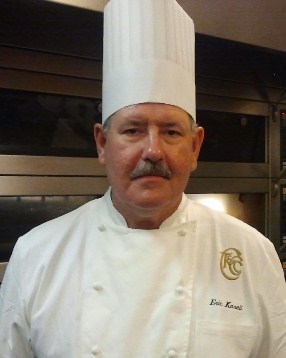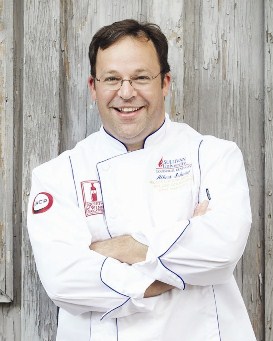Green Tomato: CIA Promotes “Going Green” with Recipes
Sunday, 03 June 2012 07:27
 Thai Fresh Pea Soup is merely one delicious creation that capitalizes on the fresh bounty of the season.
Thai Fresh Pea Soup is merely one delicious creation that capitalizes on the fresh bounty of the season.
In 1970, the first Earth Day was organized to promote environmental awareness and encourage stewardship of our natural resources. That first, massive grassroots movement by student demonstrators, schools and communities began with Senator Gaylord Nelson’s efforts to put environmental concerns on the political agenda.
More than ever, Americans today are making smarter choices to help keep Mother Earth “green.” The Culinary Institute of America (CIA) is teaching the next generation of chefs to be stewards of the environment. The college’s green initiatives were recently featured on public radio’s Living on Earth. You can listen to the segment online here.
Now is a great time to “go green” in the kitchen. As our thoughts turn to gardening and farming, it’s time to turn over a new, green leaf. Farmers' markets are putting out their crops of the season.

 A member of the American Culinary Federation’s chapter in Atlanta lauds the personal and professional value of attending a well-developed and executed monthly meeting.
A member of the American Culinary Federation’s chapter in Atlanta lauds the personal and professional value of attending a well-developed and executed monthly meeting. As revealed at this year’s IACP Conference in New York, on the map, but off the beaten path, is where today’s food trends are emerging.
As revealed at this year’s IACP Conference in New York, on the map, but off the beaten path, is where today’s food trends are emerging. National advisory board recommends a more-modern approach to culinary education for the 16 schools in the United States.
National advisory board recommends a more-modern approach to culinary education for the 16 schools in the United States. Many students arrive for class thinking they don’t need to know about beverage because they deal with food. Here’s why they’re wrong.
Many students arrive for class thinking they don’t need to know about beverage because they deal with food. Here’s why they’re wrong.